 MEDIA ROOTS- Despite the incessant commercialization of electronic music and increasing accessibility to beat making software, my brother Robbie Martin, AKA Fluorescent Grey, continues to push his musical limits while staying true to his art.
MEDIA ROOTS- Despite the incessant commercialization of electronic music and increasing accessibility to beat making software, my brother Robbie Martin, AKA Fluorescent Grey, continues to push his musical limits while staying true to his art.
Every album he’s released has been the product of innovative conceptualizations, whether it be constructing songs from sampling the elements of fire and water or combining hertz frequencies to cancel out sounds. His music falls loosely into the genre of IDM (Intelligent Dance Music) akin to the likes of Aphex Twin and Squarepusher, but his versatility and constant exploration into new territory makes him difficult to box into a particular category.
Fluorescent Grey studied audio engineering at Expressions for New Media College in Emeryville where he mastered his technique and production skills. In an effort to remain as independent from the mainstream as possible and not have to cater toward other labels, he then pioneered the creation of Record Label Records, a bay area based record label that now represents a variety of artists worldwide.
Robbie’s non conformity has also led to his involvement with several hoaxes that have caused quite a stir in the musical and political world, including tricking Autechre fans into thinking his album was a leaked copy of Autechre’s Untilted, creating a bogus Myspace page for Aphex Twin’s side project The Tuss, and releasing a fake terrorist beheading video that got him attention from media outlets worldwide as well as a visit from the FBI.
Now, Robbie co-hosts and produces Media Roots Radio, where he incorporates unique vintage electronic music into every broadcast. My brother’s creativity has hugely inspired me in life, and he’s taught me everything I know about music, so it was a great honor to have been able to sit down with him for an in depth interview about his inspiration, his discography, his label, his thoughts on politics and on the future of electronic music.
***
MR: You have been passionate about music ever since you were young, and you’ve always had a taste for the bizarre. Where do you think that stems from?
FG: Probably listening to Weird Al Yankovic as a kid. I remember getting old tapes of his Michael Jackson parodies, one song in particular that really inspired me was his Devo parody “Dare to be Stupid.” At the time, I didn’t know it was a parody, it just seemed like a really creative and weird song. It was him saying all these non sequitur things over really fast techno music, and I liked the aesthetic combination of that.
Another song of his was a love ballad done in a 50’s-Doo Wop style, and the lyrics were about him mutilating himself to get this girl. “I’ll jump in a pool of razorblades for ya baby” and stuff like that. “Christmas at Ground Zero” was a gleeful theme of post-apocalyptic nuclear fallout, and “Mr. Frump and the Iron Lung” was a song where Mr. Frump talks to Weird Al through a disturbing iron lung sound effect.
Weird Al Yankovic’s “Mr. Frump and the Iron Lung”
FG: Our neighbor gave me a tape when I was eight that had the songs “Shoehorn with Teeth” by They Might Be Giants and “Punk Rock Girl” by the Dead Milkmen, and they were both kind of in a similar vein to Weird Al Yankovic. Those were all awesome, weird songs that stuck with me as a kid. I remember thinking Shoehorn with teeth in particular had some kind of double entendre sexual meaning, of course now that I’m older I know it doesn’t (laughs). Those songs carried a certain creative energy to them.
MR: Who are some of your other musical influences early on and now?
 FG: A lot of older hip hop. Slick Rick’s
“La Di Dah” and “Square Dance Rap” by Sir Mix-A-Lot were two songs that were in
a higher echelon of rap music. They went beyond the genre of rap and were just
insanely infectious songs.
FG: A lot of older hip hop. Slick Rick’s
“La Di Dah” and “Square Dance Rap” by Sir Mix-A-Lot were two songs that were in
a higher echelon of rap music. They went beyond the genre of rap and were just
insanely infectious songs.
Later on, when I really got into more avant-garde stuff, the main acts that influenced me were Coil, Zoviet France and Aphex Twin. Aphex Twin was a huge inspiration for me, but Coil and Zoviet France were more interesting to me at the time because they were more unpredictable. Especially Coil. Some of their stuff has vocals, some is just noise, some is totally melodic, and some is classical.
MR: In high school I remember you getting into some really crazy experimental music where you were playing radio frequency and static noises that were pretty unbearable to listen to. When did you venture into such extreme territory?
FG: I think the turning point for me is when I started making my own music. I wanted to play guitar in a band, but I was never really good at guitar and could never get enough friends together with the same musical tastes to form a band. The only friends that I knew who were good at instruments, well let’s just say their favorite bands were MxPx, Blink 182 and the Mr. T Experience.
My first exposure to industrial music was when I heard Nine Inch Nails as a kid, and I was really inspired by the combination of weird sounds with emotion. I remember hearing “Down In It” on the radio and then just listening to the Pretty Hate Machine tape all the time. When NIN’s Downward Spiral came out, I had started doing a lot of music research on the internet. I think it was around 1994, and there were a lot of resources online to discuss music with people in different groups.
I found the AOL usenet section and then the rec.music.industrial news group. The people in it said that Nine Inch Nails wasn’t real industrial music and they just rip off all these other bands. They listed other bands like Ministry, Skinny Puppy and Throbbing Gristle and at the time, it was a really important resource for me because I didn’t know anyone else who wanted to explore further than NIN.
There was a record store in Pleasanton of all places called City Records that had an industrial section, and they let you listen to cds before buying them. I sat on the floor of City Records and listened to almost the whole duration of Skinny Puppy’s Too Park Park for the first time, it was mesmerizing. Even though I was a little thrown off by Ogre’s voice at first, I went with it and bought all the Skinny Puppy I could find, eventually landing on Bites and Last Rights as my two favorites.
The first album that I heard from that springboard was Zoviet France’s Garista. I remember hearing about Zoviet France because they (Mark Spbyby specifically) were working with Download and I got into Download via Skinny Puppy. I bought Garista not knowing it was Zoviet France’s first CD, and it just sounded like people in a garage banging shit together, just the most tribal and pure form of music. There were no rules. There was no studio production or anything, it just sounded like anybody could do it if they wanted to.
Zoviet France’s “Side B”
FG: It was a really weird experience for me, because I didn’t understand that someone could just put something like this out there and people would listen to it. It didn’t fit into my mental vocabulary. It became really inspiring for me, because I realized that I don’t have to play the guitar, the drums or be learned in music theory to make stuff people will enjoy listening to.
MR: Did you start making music by sampling and experimenting with different sounds that you found around you at the time?
FG: Yeah, it started with just things I had around the house. One of the first songs I ever made was with Mike Dunkley, a guy who later came on board as a contributing artist with Record Label Records. We made a song together when were in middle school that involved a snoring Santa robot toy. It was Santa in bed snoring, and when you held his stomach down, it messed up and kept repeating the same sound over and over. We made a song where we put the snoring through all these computer effects. Back then we couldn’t afford guitar pedals or effects processors, so we used the Sound Blaster 16 programs that came with Windows to add echoes and stuff.
MR: That’s awesome, I remember that toy! I have always
really liked your artist name and have always wanted to know how the hell you
came up with it.
 FG: It was a concept
I used to think about a lot as a child- colors that you try to imagine in your
mind that don’t exist. I would get into these weird mind fuck loops as a kid
where I would lie in bed at night wondering if are colors out there can’t see
and don’t exist… what would those look like? It’s just one of those things you
think about as a kid. When highlighter markers hit the market it seemed like
this exciting new technology. I was only five years old or something, but it
was almost magical to me how they were so bright.
FG: It was a concept
I used to think about a lot as a child- colors that you try to imagine in your
mind that don’t exist. I would get into these weird mind fuck loops as a kid
where I would lie in bed at night wondering if are colors out there can’t see
and don’t exist… what would those look like? It’s just one of those things you
think about as a kid. When highlighter markers hit the market it seemed like
this exciting new technology. I was only five years old or something, but it
was almost magical to me how they were so bright.
MR: We did grow up in the 80s, and there seemed to be a big fluorescent tone throughout the culture.
FG: Yeah, the fluorescent tone was definitely a big inspiration. It goes along with the weird mental fuck loop I would put myself in with the concept of fluorescent colors, and imagining a color that couldn’t possibly be fluorescent, like fluorescent grey.
MR: What was the first official Fluorescent Grey release?
FG: When I released the first album under the name Fluorescent Grey, I was spelling Fluorescent F-L-O-R-E-S-C-E-N-T, which actually means flowery. The first release under that name was called Dirk Furgonson’s Orchestral Rollercoaster of Fun & Challenge and it was a recording of Aaron Epperson and I jamming in our garage with random shit we had at the time. We stacked all this stuff into the mic input of a karaoke stereo system using adapters, splitters and headphones. We didn’t even have a mixer or anything, just spaghetti cables coming out of a mic jack. The session was recorded on a 120 minute cassette tape as a limited edition of one.
Amoeba Records in Berkeley used to allow experimental noise musicians to sell tapes, so we put ours in the store, but an Amoeba employee bought it before it even had a chance to sell on the shelves. I think the guy thought it was cool that some 16-year-old kid was selling their own noise music to the store. Phil Blankenship aka Lefthanddecision was the guy curating the noise section who bought the tape. The next album was called Swiveling Lawn Chairs, and we made it by syncing up different Fischer Price style turntables with scotch tape patterns so they would make a repeated rhythm every time the record rotated.
Next, I tried my hand at doing a minimalist tone album called Twenty to Twenty Thousand Hertz, influenced by people like Pansonic and Jean-Claude Risset. The concept was a four CD set with each CD being a 74 minute test tone from 20 hertz to 20,000 hertz over the course of 74 minutes. One of the discs was 20 to 20,000, one was 20,000 to 20 and another was 20,000 to 20 in one channel and 20 to 20,000 in the other channel combined, so at one point in the middle of it would actually be silent because it was face canceling itself out.
 Molten
Ghost was my next release, and is probably my favorite album from this period
of time. It was a culmination of my experimentation on older Windows computer
programs like Cool Edit Pro, Vaz, Audio Mulch, Rebirth- some of it sounds like
modern Mego Records stuff, and I’m pretty proud of it (download or stream Molten Ghost).
Molten
Ghost was my next release, and is probably my favorite album from this period
of time. It was a culmination of my experimentation on older Windows computer
programs like Cool Edit Pro, Vaz, Audio Mulch, Rebirth- some of it sounds like
modern Mego Records stuff, and I’m pretty proud of it (download or stream Molten Ghost).
Later on around 2001 I was going to Expressions College for audio, I was listening Venetian Snares’s Cats, Squarepusher’s Go Plastic and Autechre’s Confield and Draft. But I never had felt like I was skilled enough in making beats or programming songs to match the caliber of those artists. It wasn’t until 2002 that I felt like I had learned enough and was ready to take a stab at doing something more elaborate than what I had been doing, production wise.
 That’s
how Lying on the Floor,
Mingling with God in a Tijuana Motel Room came about. At
first, it was going to be a rushed album of songs I was working on at the time.
Then I realized I could use the opportunity to embark on a lot of ideas that
I’ve had for years for songs to put on the album. For example, the song made
only from water sounds was a concept I had always wanted to do.
That’s
how Lying on the Floor,
Mingling with God in a Tijuana Motel Room came about. At
first, it was going to be a rushed album of songs I was working on at the time.
Then I realized I could use the opportunity to embark on a lot of ideas that
I’ve had for years for songs to put on the album. For example, the song made
only from water sounds was a concept I had always wanted to do.
I also wanted to do a song based entirely around Kabuki theater sounds and a song using spectral morphing synthesis to morph from one sound to the other. I used sounds that were personal to me too, like the sound of me hitting the aluminum walls of a work shed with a baseball bat. The tracks on Lying on the Floor also incorporate a lot of fast, IDM glitchery sequencing techniques, because I’m interested in the technical quality of beats that are too fast to play but that your brain can still follow and process.
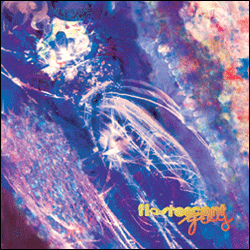 My
next release, Gaseous Opal Orbs,
fit as a great follow up to Lying on the Floor. It was the first album that I
started using Physical Modeling Synthesis on, which is the recreation of acoustic instrument sounds by using
only computers, equations and pure synthesis. There are absolutely no samples,
recordings, or real instruments. You simply input the mathematical dimensions
of what you want to create. For example you can make a virtual horn that is a
hundred feet long, or make the sound of a violin being strummed forever.
My
next release, Gaseous Opal Orbs,
fit as a great follow up to Lying on the Floor. It was the first album that I
started using Physical Modeling Synthesis on, which is the recreation of acoustic instrument sounds by using
only computers, equations and pure synthesis. There are absolutely no samples,
recordings, or real instruments. You simply input the mathematical dimensions
of what you want to create. For example you can make a virtual horn that is a
hundred feet long, or make the sound of a violin being strummed forever.
It’s fascinating, because it brings you to a state of mind where your brain can’t tell the difference between real sounds or sounds made with a synthesizer. Even if I make the sound myself, I like to fire up an automator that will randomly automate the parameters of the sound so that over time it evolves into an unrecognizable texture and takes on the strange quality of a dying organism or screaming creature. I have gotten some really strange, guttural vocal sounds by using physical Modeling synthesis that by the end of this real time manipulation I barely recognize as mine, they take on a life of their own.
The way music production has evolved is almost like a magic trick. Hollywood sound design will stack together a ton of different samples just to make the sound of someone tearing open a bag of potato chips or something. They won’t even use the sound of someone opening a bag of chips, instead they will layer together sounds like crunching leaves or rubbing straws together.
That’s the kind of artistic liberty you can take with sound that you can’t do with visual arts. It’s much harder to trick someone visually. Brian Eno has a great quote about this where he said imagine the impact on visual art if visual artists and painters didn’t even have access to 50% of the color spectrum until the year 1950. On a side note i’m a big admirer of Brian Eno the writer, but not so much the musician.
The same thing has happened with music. When synthesis and other music making techniques were invented, it was similar to having all these new colors, timbres and textures that were brand new to the human ear. It was an entirely new set of tools that opened up new ways to make sound. The technology is still in its infancy. We’ve only known how to create them for the last 70 years, which is not long in the course of human history. Computer DSP technologies have taken us a long way too.
MR: Talk about your album that you said you made all in one continuous session.
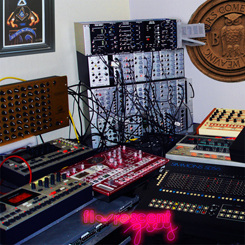 FG: Improvised
Electronic Music comes from the idea of making something
with a static, rigid beat structure to it. It started as something in the 171
BPM tempo. I wanted to make really fast electronic music that started with an
empty pattern and built on top of it from scratch. Instead of going back and
erasing anything, I kept everything and forced myself to move forward while
recording the entire process.
FG: Improvised
Electronic Music comes from the idea of making something
with a static, rigid beat structure to it. It started as something in the 171
BPM tempo. I wanted to make really fast electronic music that started with an
empty pattern and built on top of it from scratch. Instead of going back and
erasing anything, I kept everything and forced myself to move forward while
recording the entire process.
Out of 20 hours of recording time of me on my sequencer, I got about one hour of usable music. I didn’t re-arrange any of the music that I improvised, I only compressed the time and delete portions in between. The overall structure and the flow was the same, and since it was all at 171 BPM it ended up sounding like a continuous dance mix at the same tempo with no lapse in the beat (download or stream Improvised Electronic Music Parts 1-3).
MR: That’s a really cool concept to challenge yourself with.
FG: It was liberating to be able to make music according to a different set of rules than what I was used to entirely. The newest album that I just put out is through UK label Acroplane Records, called Antique Electronic Synthesizer Greats, 1955 to 1984 Part 1 (download in full Antique Electronic Synthesizer Greats).
The album is my love letter to old electronic music- before rave, before synth pop, before industrial, and before electronic music was set into this pattern and absorbed into more rigid formulas. If you make electronic music now, people will ask: Is it drum and bass? Is it dub step? I’m talking about back when it was just music made with synthesizers or by creating tones with sped up tape loops, and you couldn’t label it like that.
I wanted to make new songs using all these different loops and layers from old music I had collected over the years. Some of them have recognizable melodies that will remind people of old songs which is the fun part of it. Another reason I made the album was that I wanted to flesh out some of those songs and kind of show how they were responsible for things that came later on. When I listen to music like old Ptose, Cluster, or Harold Grosskopf, it reminds me how that, you know, a lot of these artists that make electronic music now are referencing either intentionally or just through the ether, these older artists and are echoing ideas that were formed a long time ago.
Then there are artists like Justice who actually take these old songs- like Goblin- and remix them into really hard hitting modern dance sounding songs. It’s really cutting production, like really vacuum sucking bass drums. It’s really pleasurable sounding, but I was trying to avoid that with this. I wanted to just showcase the sounds as they were. The compression I used in some tracks I wouldn’t use for effects. I just layered a lot of these old sounds on top of each other to thicken them out, like the bass drum from Kraftwerk’s “Radio-Activity” with a baseline put over it from a Tangerine Dream track.
Fluorescent Grey’s “Chicken Hypnotism”
MR: You are also the founder of Oakland based independent record label, Record Label Records (RLR), what prompted you to start the label?
FG: I started RLR because we needed a vehicle to launch my friend and my Great White Hype Coil parody rap album off of. Instead of just self-releasing it, we wanted to come up with an umbrella label for it. But at the time there wasn’t much of a plan to keep it going farther than just releasing rap parody releases.
MR: How did it evolve into something more? When did you start pulling other musicians onto the label?
FG: I started getting more serious about my own music, and I knew that I didn’t want to compromise what I wanted to do by trying to get on someone else’s label. So I started working hard to put out my own music on my own label. Kush Arora, one of the artists on RLR, is a longtime friend who is into similar musical styles, so it was natural to put him on the label. RLR released his debut album Underwater Jihad.
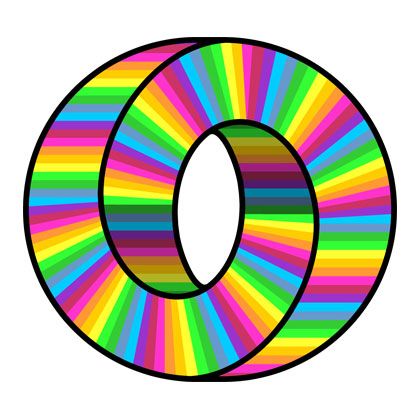 MR: A lot of the artists on RLR have also been your
friends growing up. It’s cool that so many of your friends just happen to be
extremely musically gifted as well, and amazing that you have given them an
outlet with RLR to put out their music.
MR: A lot of the artists on RLR have also been your
friends growing up. It’s cool that so many of your friends just happen to be
extremely musically gifted as well, and amazing that you have given them an
outlet with RLR to put out their music.
FG: Yeah, but that’s just a weird coincidence for me, I wouldn’t sign my friends just because they are my friends. Like I had no idea Mike Dunkley had continued making music from high school. Then one day I saw him in the halls of Expressions College and found out he was taking their visual arts program. He showed me some of his music and I was surprised because it was really good. In a way, it was really similar to mine. We were both obsessed with a lot of the IDM music banking techniques and sound design, and we were both huge Autechre fans.
MR: A lot of labels release only certain genres and don’t branch out to incorporate different sounds. But RLR takes a different approach, by hosting artists like Kush Arora and Sote, who both have completely different sounds.
FG: RLR is a mostly experimental label that caters to people with weird taste. I think too many labels have the tendency to put out genres of music people are already comfortable with, like Dubstep or garage music. I don’t want to plug RLR into any particular genre. Genres come and go- for me it’s more about picking music that I not only find fun to listen to, but that is also groundbreaking in some way.
MR: So you aren’t closed off to any sound?
FG: Well I haven’t put out anything with pop music and vocals, but nobody has sent me any demos in that vein that i’ve loved. If someone sent me a great demo of something like that, I would put it out. Brian E is probably the poppiest thing I have put out. Some people might try to lump his music in with other ’80s revival music right now, but I think it stands apart from most of that stuff. It’s referencing all the best aspects of 70s prog, things that most retro revivalist musicians find too difficult to even attempt. It hits a perfect stride to me, only a few artists I think have successfully done this as of late one of them is Dam Funk.
Fluorescent Grey’s Ice Cap Zone 2 Michael Jackson Mashup
MR: What other independent labels do you respect and follow?
FG: The top one that comes to mind is Pthalo Records. They’ve put out a lot of music that I happen to be obsessed with like Wobbly and OST and Terminal 11. They were probably the first label that put out a lot of that really crazy but more specifically unhinged experimental electronic music post digital age. Also Mego Records’s influence is pretty huge. Another label that I think is underrated is Childisc Records, which is Nobukazu Takemura’s label.
MR: The most notoriety you have gotten in the press isn’t from RLR (yet), but from numerous musical hoaxes you have pulled on the internet instead. Talk about the Autechre and The Tuss hoaxes you did.
FG: The Autechre hoax happened when Soulseek was at its peak, now it’s dying off because people download most of their mp3s on torrent sites or mediafire, filestube things like that. But when Autechre was about to drop their ninth album Untilted, I had their album name in my search terms so it would show up once its leaked. Keep in mind that I was and still am a huge Autechre fan boy, so usually I wouldn’t sit on the internet literally waiting for a leak to show up in real-time.
When the first result popped up, I downloaded it and I wasn’t sure if it was real because it sounded a lot different than I expected. It suddenly came to me that even if it was Autechre, it sounded more stripped down and different enough from their previous styles that someone could make something that sounded similar and people would believe it’s real. So I put about 50% of Lying on the Floor, an album of mine I had been sitting on for a year, on SoulSeek with the same Autechre album song titles.
Within hours there were 300 downloads of the album..just from my account, to know how many others shared it and had downloads from their computers is incalculable, and it kind of spread like wildfire across the net. Tons of people listened to it, believed it, and really liked it. Some people even said they liked my album better than the real Autechre album they ended up hearing. To be fair, a lot of people didn’t like it either. Some of the comments I saw said “where did all the synths go?” and “Autechre would never use tabla” (laughs).
MR: What equipment do you normally play with and use to make music?
FG: Recently I’ve been working with a lot of synthesizers and effects processors. I’ve been moving away from the computer a bit more just to get out of my comfort zone, but I’m moving back onto it now.
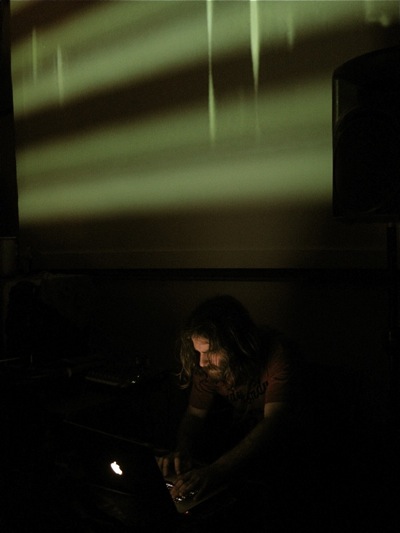
FG: When I do live shows, I like to have parts that allow me to improvise. When you’re using a drum machine, you could just play a whole show by playing back patterns that you’ve already made on the machine and it wouldn’t really be live. It would just be you switching to the next pre-recorded pattern. But there are people who make a really good show out of combining different loops and patterns- like Daedelus. He’s really good at performing with a bunch of loops that he manipulates and mixes together on the fly.
But to play a show like the San Diego show, sometimes I wear a headphone to hear the beat as it’s coming in. I’ll listen to the music in one headphone as I cue up the drum machine and manually sync it in, most of the time I dont use headphones so I will have to cue it in perfectly on beat and risk being off. I always start with a bass drum, because it’s safe and easily on sync with the tempo. But I’ll usually bring it in with a mostly blank pattern where it’s just an empty grid of 16 steps using either a drum machine or a Korg Electribe.
As the music is going, I’ll usually make up a beat on the fly. It’s an exciting process because you’re generating something that is unpredictable. It could either suck or be really good. Sometimes I’ve taken people out of the moment by making too crazy of a beat or something. But then there are other times I’m really surprised that one base drum here and one snare drum there works and people enjoy it.
MR: You just got a ridiculously awesome old school synthesizer.
FG: The ARP 2600. It’s basically the world’s greatest analog synthesizer ever made.
MR: As someone who has been into the more underground IDM electronic scene for a while, what do you think about the fact that IDM seems to be influencing a lot of more mainstream music? Bands like Animal Collective and Deerhoof seem to be incorporating a lot of weird sounds and styles. And just in general you see a lot more Warp artists headlining indie music festivals and stuff. Do you think it’s a good thing that the mainstream is becoming more accepting of other types of electronic music beyond just house and techno?
FG: I think there are good and bad aspects of it. Just like anything else that catches on with the mainstream, it can get distilled and whitewashed. It infects everything, like now you hear Aphex Twin production techniques on Britney Spears songs and car commercials use glitching stuttering effects. It’s all over the place now, which makes it boring. But in a sense that’s also a good thing because it makes people who want to be on the tip of the spear and cutting edge move beyond those old techniques.
Before they got appropriated by the mainstream, people didn’t really know how to do them. They were kind of like these secret magic tricks you’d do in a computer, but there weren’t workarounds and tools to do those things for you. Now there are, and everybody has access to them.
MR: The accessibility pushes the envelope for people to keep reinventing music.
FG: It pushes people beyond the idea that technology shouldn’t define music. The things you’re able to do in the computer shouldn’t define the music itself. If music is good it will move beyond those technological trappings. Just because those techniques can be done by everyone now, doesn’t mean that people shouldn’t be creative anymore.
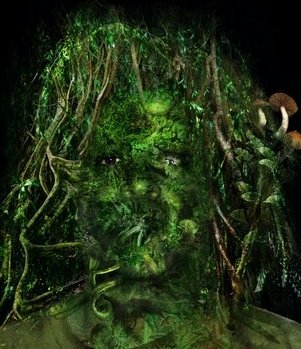 MR: Agreed, I think it’s a really exciting time for
electronic music, precisely because of what you just said.
MR: Agreed, I think it’s a really exciting time for
electronic music, precisely because of what you just said.
FG: I’ve also realized that the term electronic music is becoming, or should I say is an outdated term, because technology doesn’t define electronic music like it used to when electronic music meant literally made by electronic equipment, like synthesizers and samplers. Now everyone uses electronics and sampling. Take jazz- I’m sure there are some bad jazz producers out there who take the best sounding drum loop or snare drum sound from the whole song and replace every drum sound in the song with that one sample.
My friends and I have described most modern commercial rock music as cybernetic music because it’s half-electronic / half-real, and you can’t tell the two apart. It’s been edited heavily on protools, subtly autotuned and squashed so much dynamically that it looses all character. So the term “electronic music” doesn’t really apply anymore to the genre. Also, the internet culture has sped up things so fast that more and more music fans and hipsters are looking for the newest and weirdest type of music to be into. That has pushed the experimental and avant-garde music into the mainstream- it’s the last bastion of what people haven’t discovered yet.
Now, there is so much technology available and so many ways to achieve a certain sound. You can fake an old 1930s record now using modern technology to record tricks and make it sound old, you know? To me, electronic music just means anything that uses those illusions to convince people they’re hearing something that they aren’t.
MR: Can you tell when something that isn’t supposed to be ie: pop punk music is a sampled or edited beat just by listening?
FG: Some of the time yeah, because it’s not very well done. But more often than not it’s hard to tell. There are really good producers that have been able to trick people for years. Pretty much the last 15 years of rock music on the radio has been totally edited to the point where they might as well be using a sampling library like the BFD series.
MR: Like auto tune- it seems to be in every pop song out in the last two years. Shifting gears here, as a highly politically opinionated person, how do politics fit into your music making?
FG: I’ve tried to keep my political beliefs and my art separate, and don’t plan to inject too many politics into Fluorescent Grey- but there’s an underlying political belief that Record Label Records is founded on.
MR: It seems like it is the artistic integrity of maintaining a small indie label and not selling out to multinational corporations. RLR provides an important platform for other independent artists to put their work out there.
FG: I try to maintain that. I also try to maintain autonomy from the dance music culture, which is the primary way people make money in the electronic music scene. I am not trying to make money by compromising what I want to do. With Record Label Records, I want to have a home for artists who are kind of making music that’s really personal to them, and it doesn’t have to fit into any particular niche.
MR: But Record Label Records did endorse Cynthia McKinney and Ralph Nader for the 2008 Presidential elections.
FG: Yea, I got irritated that everyone I knew in the electronic music scene was an Obama lover. I would go on websites like Accelerator and they would be talking about him. So that’s why I publically endorsed Nader and McKinney. I think I’ve made a lot of people angry by utilizing some hoaxing techniques too, things that I learned from the beheading hoax I did.
MR: What are you working on right now, and what’s in store for Record Label Records?
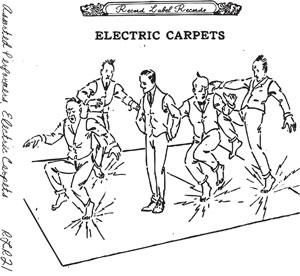 FG: Record
Label Records just released a compilation series this year of Record Label Record
artists, part one of the compilation is called Drinking the Goat’s Blood and
the second one is called Electric Carpets. Drinking the Goat’s Blood is
more of an experimental album, while the second disc shows a more poppy side of
Record Label Records.
FG: Record
Label Records just released a compilation series this year of Record Label Record
artists, part one of the compilation is called Drinking the Goat’s Blood and
the second one is called Electric Carpets. Drinking the Goat’s Blood is
more of an experimental album, while the second disc shows a more poppy side of
Record Label Records.
With this compilation we brought in a lot of new players into the RLR family. Some of the people I have been a fan of for a long time and others are people who have sent me demos over the years. Wobbly, who has another appearance on the RLR compilation Ghostbusters 3, but I’m really excited to have two exclusive tracks from him on this compilation. He just came out with an amazing split album with Jay Lesser and Matmos off Important Records that I recommend everyone to check out.
Not Breathing is also appearing on Electric Carpets, who makes amazing stuff. Koyxen, AKA Kouhei, a Japanese artist is on a collaboration with hip-hop artist Sensational and is putting an exclusive track on. Contagious Orgasm has a track on it too.
Then there’s a track by Senryl, AKA Gunnar Cubbins, another artist who I’m really excited to have on board. The way I discovered him was by total random chance. A friend of mine gave me a tape of amazing electronic music made between 1982 and 1986, and it was incredibly weird sounding, experimental TR606 music. Senryl had made all of their music in santa cruz, most of it at Cabrillo Junior College , and back then there weren’t a lot of people in Santa Cruz doing EMU modular systems. In fact, some of the music he worked on was some of the only music ever made on an EMU modular system. EMU only put out a couple of modulars, and one of them was at UC Santa Cruz which he had access to due to him wooing the staff with his self made recordings.
Senryl – Dusted (from: ‘Drinking the Goat’s Blood’ RLR20) from Robert Martin on Vimeo.
I also am about to release a Fluorescent Grey album called Ambiente, which was a split release between Record Label Records and UK based Catalyst Records. I’ve been working on this album longer than probably anything else i’ve released. Some of the tracks on it date back to 2005, it’s going to be 2 cds long each one 80 minutes. The second disc, titled Uncanny Valley, will be a seamless mix of brand new ambient music, whereas the more older stuff will be featured on the first disc.
Fluorescent Grey’s Ambiente Sampler
Mike Dunkley and Lucas, AKA Kossak, are both coming out with their first full length albums this year. Steven Frenda AKA Scuzi is coming out with his first full-length album too. Some more things to look out for the future: Tomoroh Hidari’s double album is going to be released, which will be the first double vinyl release by RLR. The Record Label Records website now has a station player where you can upload every single track of any release we have done and listen to it in full.
MR: And I, Abby Martin, am happy to announce that I will be doing a special series of eight limited edition original paintings as covers for a limited edition Ambiente release.
FG: Yes, and for Ambiente, only one of the discs is going to be available in a digital format. The two-disc set is also going to be a limited edition run of 50 copies or so. Besides Ambiente, I’m putting out what is supposed to be a third disc in an unofficial trilogy that was meant to go along with Lying on The Floor and Gaseous Opal Orbs. The third disc in the trilogy should come at the very end of 2011.
After that, I am going to put out an album called Plunderphonics 5.1, the theme for which is all stolen material from modern DVD recordings. Modern DVD meaning 5.1 surround sound. It’s going to be a collage album based off of stealing weird surround sound background tracks from different movies. Another album in the works will be a limited run and it will come with a vest- where you can experience music tactilely, with a speaker that goes on your chest and no headphones. It’s going to be an album that you can only feel with your stomach.
***
To find out more about Robbie Martin AKA Fluoresent Grey go to his website www.RecordLabelRecords.org, or follow him on twitter or facebook. You can also check out his first Media Roots Music mix and hear him and his musical selections in every episode of Media Roots Radio.
Interview conducted and written by Abby Martin
Photos by Abby Martin, flickr user PhotoSteve101










